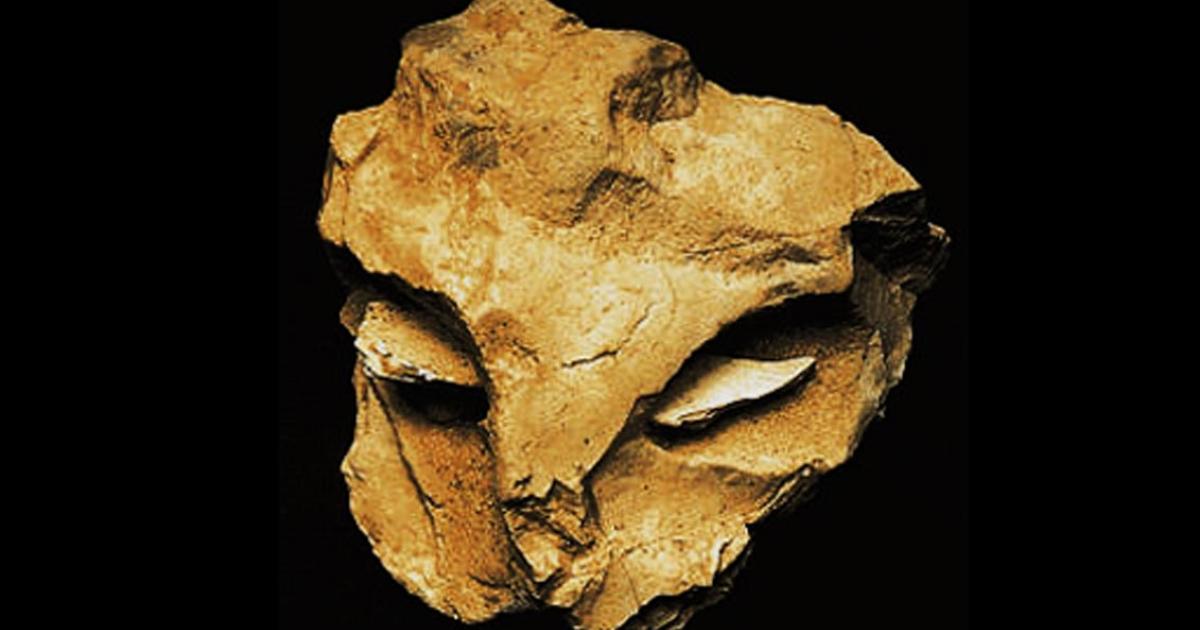The Mask of la Roche-Cotard, also known as the "Mousterian Protofigurine", is an artifact dated to around 75,000 years ago, in the Mousterian period. It was found in 1975 in the entrance of a cave named La Roche-Cotard, territory of the commune of Langeais (Indre-et-Loire), on the banks of the river Loire.
The artifact, possibly created by Neanderthal humans, is a piece of flat flint that has been shaped in a way that seems to resemble the upper part of a face. A piece of bone pushed through a hole in the stone has been interpreted as a representation of eyes. Paul Bahn has suggested this "mask" is "highly inconvenient", as "It makes a nonsense of the view that clueless Neanderthals could only copy their cultural superiors the Cro-Magnons". Though this may represent an example of artistic expression in Neanderthal humans, some archaeologists question whether the artifact represents a face, and some suggest that it may be practical rather than artistic.
In 2023 the oldest known Neanderthal engravings were found in La Roche-Cotard cave which have been dated to more than 57,000 years ago.
See also
- Art of the Upper Paleolithic
- Art of the Middle Paleolithic
- List of Stone Age art
References
Further reading
- M. Lorblanchet, La naissance de l'Art. Genèse de l'art préhistorique, Errances, 1999
- Marquet J.-C., M. Lorblanchet, Le "Masque" moustérien de La Roche-Cotard, Langeais (Indre-et-Loire). Paléo, 2000, n° 12, p. 325-338.
- Laurence Nicoud: L'art néandertalien: réalité et énigme. Archéologia (Paris): 407:6, January 2004
- The Mousterian Protofigurine from La Roche-Cotard (France)




